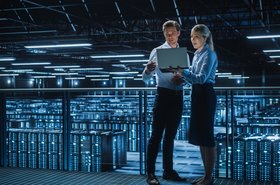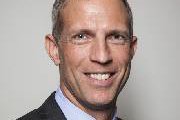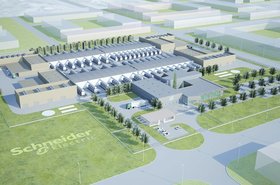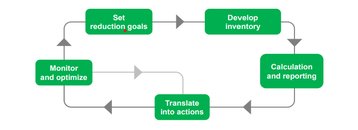There is no question that wholesale data centers, like hyperscale ones, are facing rising capacity demand while trying to operate more sustainably. This balancing act has become even more challenging since AI has taken center stage across all industries, requiring greater and greater computing power. In fact, data centers output 4 percent of the world’s carbon emissions.
We all know that data centers, considered “energy hogs” by some, cannot operate today without addressing sustainability initiatives. Cloud and colocation providers are taking note of technological advancements that enable them to measure and curtail carbon emissions, water consumption, and other environmental waste. Indeed, a holistic sustainability strategy is now inextricable from the business strategy at large.
One innovator forging the path ahead for the colocation provider market is Aligned Data Centers. I had the opportunity to meet with Phill Lawson-Shanks, Aligned’s chief innovation and technology officer, to discuss ways data center providers can reduce carbon emissions while meeting growing capacity demand from wholesalers and enterprise tenants.
In our Innovation Talk, “Empowering wholesale colocation providers through carbon accounting and circularity,” we explore what sustainable decision-making for data centers means, focusing on the transformative power of carbon accounting and circularity.
A pioneer in sustainable data center design and operations, Aligned Data Centers, which caters to wholesale and enterprise clients that need sustainable data center capacity, delivers leading PUE, WUE, and CUE metrics across six million sqft and 1.3GW of power.
Here are three key takeaways from our conversation:
1. Start with carbon accounting
We will say this time and time again at Schneider: You can’t measure what you can’t see. Accurate carbon accounting gives you the transparency you need for reporting throughout the entire data center lifecycle. This information is vital for enabling colocation providers to communicate carbon emissions across the supply chain. Tenants who are working toward sustainability goals can leverage this information and map it against their own sustainability KPIs. It also allows them to select one data center provider over another.
While operators can more readily identify and measure Scope 1 emissions (those from direct operations) and Scope 2 emissions (those associated with the purchase of electricity, heat, steam, or cooling), the real challenge lies with accounting for Scope 3 emissions.
That’s because these are the embodied emissions in all building materials, such as concrete and steel, and the manufactured equipment inside a data center.
Most cloud and colocation providers struggle with a lack of reliable supplier data, quantitative tools to measure Scope 3 emissions, and a clear accounting and reporting methodology. As Phill points out about the building and construction phase:
“The hardest thing to do is look at discrete items and determine their embodied carbon footprint.”
Accordingly, as operators move toward renewable energy sources and efficient technologies for operating the data centers, Scope 3 emissions continue to be the largest source of data center GHGs.
At Schneider, “We believe understanding and reporting on Scope 3 emissions is the next frontier for data center industry key performance indicators (KPIs).” Aligned solves this challenge by using unique identifiers to tag and account for every piece of equipment in the data center throughout the facility’s life cycle.
This embodied carbon tracking system gives clearer visibility of embodied carbon across the data center – from steel trusses to construct the facility to electrical and cooling infrastructure sources to equipment materials. Selecting and sourcing the right materials and equipment is imperative from the beginning.
Additionally, scrutinizing other key embodied carbon contributors to data center operations is an essential step in reporting and ultimately mitigating Scope 3 emissions.
This “Recommended inventory for data center Scope 3 GHG emissions reporting,” is helpful for carbon accounting and reporting.
Aligned Data Centers takes its carbon reduction commitments a step further by actively investigating non-concrete and alternative materials in its buildings and innovating cooling solutions that cut down GHG emissions even more during operation.
2. Focus on opportunities for circularity
There is a tremendous opportunity for data center operators to embrace a circular economy. In addition to reusing key pieces of electrical infrastructure and other components, this effort could include expanding take-back, recycle, and refurbish programs designed to reduce the cloud and colocation provider’s e-waste. Initiatives to extend the life of equipment by using predictive analytics for better, more accurate maintenance also advance a circular approach.
The potential of circularity principles is promising in achieving resource efficiency, waste reduction, and a more sustainable data center ecosystem. As Phill explains in the on-demand webinar, Aligned keeps track of the lifespan and usage of equipment and products in its facilities. He notes:
“We might not be able to reuse the materials in our own work, but they could be used in another industry.”
For example, lithium-ion batteries might not be good for an EV again, but they could be good for another use. He sees this circularity effort as the responsibility of both Aligned and the equipment vendors, including Schneider, accelerating the transition to a more sustainable future. The benefits of circularity include improved operational efficiency, cost savings, and enhanced reputation.
3. Build for the future through partnership
It is fair to assume that if you build a data center infrastructure today, the building will be there for 20+ years. So you need to make sure what you are building today is future-proofed and has sustainability outcomes in mind – not just as an afterthought but as key deliverables.
Aligned Data Centers is driven by its mission to build and operate sustainable data centers now and well into the future, placing high priority on innovation for carbon-friendly design and operations. As Phill emphasizes:
“It used to just be that just one person was overseeing sustainability, and they didn’t interact with our team very much. Now they are in the room for the decision-making and have veto rights over contracts.”
One of the key areas that Aligned is innovating in is cooling, which is especially important as chips are getting hotter and creating more heat. Traditionally, the hottest components are placed in the middle of the racks. That means that with 1MW of power, a traditional approach to cooling would need to spread the load over 260 racks.
Today, by using liquid cooling technology, Aligned is able to increase the power density to 20 racks for the same amount of power. It uses onsite generation of renewable energy to further reduce GHG emissions.
Working in partnership is integral to empowering cloud and colocation providers’ stakeholders to solve the elimination of data center carbon emissions closer to zero, today. At Schneider, for instance, we are proving that repeatable architectures for sustainable data centers are faster to deploy.
Our driver is to accelerate the path to decarbonization by making sure sustainable data centers built today can meet the same performance characteristics they will need as capacity demands skyrocket.
This is especially important as the collective mindset of sustainability takes firm hold worldwide and as regulatory requirements come into play.
Together with cloud and colocation providers such as Aligned Data Centers, we can design, deploy, and operate what Phill calls an “ecologically invisible data center.” For the sake of our planet, which is facing catastrophic climate change. It is a shared responsibility we are proud to take on with Aligned and the data center sector overall.
It’s time to act now.
More from Schneider Electric
-

Sponsored Advancing data centers: Management and Operations Innovation Day 2024
Industry leaders discussed the evolving landscape of data center design, focusing on sustainability, AI workloads, and cutting-edge technologies
-

Sponsored When IT threats arise, stay calm and manage them with DCIM and lessons from Jaws
How CIOs can tackle IT infrastructure vulnerabilities with diverse strategies, akin to the film's central characters facing a fearsome shark
-

Sponsored Schneider Electric opens data center integration facility in Red Oak, Texas
The facility will construct data center infrastructure for US customers and accelerate production to meet growing demand for new data centers


